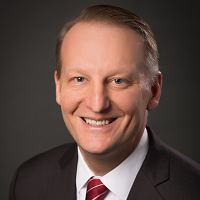 By Shawn Martin, CEO/EVP, American Academy of Family Physicians
By Shawn Martin, CEO/EVP, American Academy of Family Physicians
Twitter: @rshawnm
Twitter: @aafp
Over the next several months the United States will attempt to administer COVID-19 vaccines to the nation’s 270 million people over the age of 16. Given the strain the virus has put on our health care system and the hesitation of many to get the vaccine, this will not be an easy task, but it is one that we can accomplish with an effective and efficient strategy.
To achieve this goal, we need to educate people about the importance of vaccines, communicate the safety and efficacy in an understandable way, address individual concerns and create a culture of confidence around the COVID-19 vaccines. We also need to establish reliable processes to identify, prioritize and notify patients based upon their age, disease risk and geographic location. Additionally, we need to develop a reliable, real-time patient tracking system at the point of care.
Fortunately, the best resources available to move us toward this goal already exist – primary care physicians. It is critical that we further engage primary care physicians to help us reach the necessary COVID-19 vaccination rate. Here are reasons why these physicians are best positioned with patients to move the needle:
Trust
The biggest challenge we face is building confidence in the vaccine(s). A recent Journal of the American Medical Association (JAMA) article noted that between April 2020 and December 2020, “the percentage of people who stated they were somewhat or very likely to get vaccinated declined from 74% to 56%.” This decrease in vaccine confidence should concern us all.
Given the inconsistent messaging from elected officials regarding the dangers of the virus, coupled with the misinformation and anti-vaccination rhetoric flooding social media, it is imperative that vaccine information and education come from highly trusted sources. The best messengers already have that relationship of trust.
Primary care physicians are highly trusted by the public. A recent NPR/Ipsos survey found that when asked “How much do you trust each of the following people?” 85% of respondents indicated that they trust their personal physician. This trust in physicians was consistent across political affiliation with 84% of Republicans, 89% of Democrats and 86% of independents stating that they trust “their physician.”
Sources of Care
Creating and implementing a process to vaccinate millions of people requires that we use the proven, foundational resources that exist in the community versus seeking to create new programs. When faced with a large-scale challenge, it’s tempting to think that the best approach is to centralize distribution with large entities like hospitals and retail pharmacies. But Americans do not seek out preventive health care at these locations; they rely on their physicians, more specifically their primary care physician, to manage their overall health care needs.
According to the Centers for Disease Control and Prevention, 84.3% of adults and 93.6% of children have at least one annual encounter with a physician. Upon further evaluation we find that in any given year, 77% of adults saw a primary care physician and 89.4% of children and adolescents saw a primary care physician at least once. In fact, we know that more than 190 million unique patient visits are made to family physicians each year.
Prioritization and Population Management
The process of identifying and prioritizing individuals for vaccination is achievable through a coordinated effort with primary care physicians who have insight into an individual’s health history. According to the CDC, the priority population for vaccination is the 116 million people in the United States over the age of 50 and, more specifically, the 54 million people over the age of 65. It is highly likely that individuals have an ongoing relationship with a primary care physician who understands their health care status, risk and needs. Thus, we should leverage these relationships to manage the distribution of the COVID-19 vaccines.
We are in the earliest stages of our COVID-19 vaccination effort, but it’s fair to say that we’re off to a bumpy start. According to the CDC’s COVID-19 vaccine tracker, since vaccinations began on Dec. 14, 2020, the United States has given approximately 27.9 million first doses, which represents approximately 8.5% of the U.S. population. If we are serious about widespread vaccination of the population by this summer, we need to quickly alter course and bring trusted and proven resources to the forefront of our effort.
Americans trust physicians, especially their primary care physician. When it comes to making important decisions about their health and the health of their families, Americans don’t turn to celebrities, corporate CEOs or big box retailers; they turn to their primary care physician. Therefore, the question for governors and the Biden administration should be “How can we work more closely with the primary care physician community?”
This article was originally published on the AAFP Leader Voices blog and is republished here with permission.
